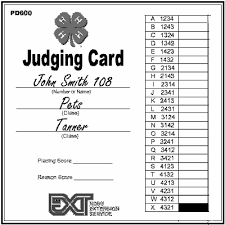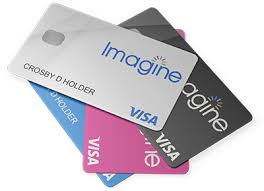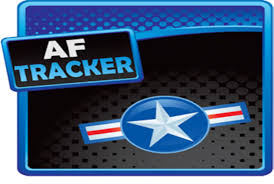A judging card is an essential tool used in various competitions to evaluate participants fairly and consistently. It serves as a structured document for judges to score performances, based on predefined criteria. These cards help maintain transparency and objectivity, ensuring that all participants are evaluated on the same basis. Whether in sports, beauty pageants, or academic competitions, judging cards play a pivotal role in organizing and streamlining the scoring process.
They allow judges to record their assessments in an orderly manner and minimize the risk of errors or bias. By using judging cards, event organizers can easily track and compile results, leading to a smooth and efficient event. The integrity of the competition is preserved, as all decisions are documented, providing a clear record of how scores were determined.
Table of Contents
Why Are Judging Cards Important in Competitions?
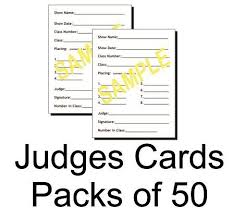
Judging cards play a pivotal role in competitions by ensuring that the evaluation process remains transparent and fair. They allow judges to document their assessments in an organized way, helping eliminate biases or errors in scoring. Without the use of a judging card, the results of a competition could be questioned or skewed, leading to unfair outcomes.
One of the primary functions of judging cards is to maintain transparency. By having clear, documented scores, it becomes easier for event organizers to trace the reasoning behind decisions, should a dispute arise. The use of judging cards ensures that every participant is evaluated using the same criteria, fostering fairness across the board.
Furthermore, judging cards help ensure that judges remain objective in their evaluations. They serve as a structured guide that prevents any subjective or arbitrary decisions, particularly in events such as beauty pageants or sports tournaments, where accuracy is essential for a fair judgment.
How to Use a Judging Card Effectively
To use a judging card effectively, it’s important to understand the format and follow a step-by-step process when filling it out. Begin by reviewing the event’s scoring criteria, which may be provided ahead of time. Mark each criterion clearly on the judging card, ensuring you understand what is being evaluated.
A common mistake when using a judging card is rushing through the scoring process. It’s important to take time to reflect on each contestant or participant and assign scores based on the established criteria. Avoid making quick judgments that could lead to unfair results.
Best practices for using a judging card include reviewing your scores before submitting the card. Double-check for consistency, ensuring all boxes are filled out completely. This attention to detail helps maintain the integrity of the competition and guarantees that the judging process is transparent and fair.
Judging Card Results – Understanding the Scoring System

The results derived from judging cards are the foundation of competition outcomes. These cards contain the scores and feedback for each participant, which are then compiled to determine final rankings or winners. The method in which results are calculated can vary depending on the event, with some competitions using a cumulative score, while others may follow a weighted system.
There are different types of scoring systems for judging cards. Some events use a numerical scale, while others may employ a letter grade or ranking system. Each system is designed to provide an accurate and objective representation of a participant’s performance, ensuring the evaluation is as fair as possible.
Interpreting judging card results is critical for event organizers. Once the cards are collected, the results are analyzed and compiled to produce an accurate final score. In some cases, if discrepancies arise, judges may be asked to clarify their scores or participate in a re-evaluation to ensure fairness and accuracy in the results.
Judging Card Login – Accessing Your Judging Information
Accessing your judging card login is a crucial part of the process for judges in any competition. The login credentials are typically provided by event organizers and allow judges to access scoring details, review participant performances, and input their scores electronically. Judges need to keep this information secure to avoid unauthorized access or tampering.
The importance of secure logins cannot be overstated. A judging card login protects sensitive data, such as participant information and scores. It ensures that only authorized individuals can input, modify, or access judging information, which is critical for maintaining the integrity of the competition.
Common issues with judging card login include forgetting login credentials or encountering technical difficulties with the platform. If this happens, judges should contact event organizers for assistance, ensuring they can access the platform promptly. Being proactive about these issues helps avoid delays in the judging process and keeps the event on schedule.
Judging Card Calculator – Simplifying the Scoring Process
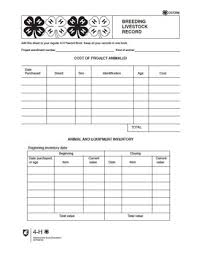
A judging card calculator is an invaluable tool for simplifying the process of tallying scores and determining winners. It automates calculations, saving judges time and reducing the likelihood of errors. By entering the scores from each judge, the judging card calculator can quickly compute the final results, ensuring accuracy and efficiency.
There are both pros and cons to using a judging card calculator. The primary benefit is the speed and accuracy it offers, especially in large competitions with multiple participants. However, one potential downside is that relying too heavily on automated systems can sometimes lead to errors if the data isn’t input correctly.
When selecting a judging card calculator, it’s important to choose one that’s compatible with the event’s scoring system. Look for calculators that allow for customization of scoring scales, enabling a seamless integration into the judging process. These tools help make the judging process more streamlined and less prone to human error.
Judging Cards in Different States: Ohio, Arkansas, Tennessee
The use of judging cards can vary greatly across states like Ohio, Arkansas, and Tennessee, as each state may have specific rules and regulations for competitions. In Ohio, for example, judging cards used in beauty pageants must include detailed criteria for categories such as appearance, talent, and personality. These cards are often reviewed by the event organizer to ensure compliance with state regulations.
In Arkansas, judging cards are typically employed in livestock competitions, where each judge scores participants based on traits like size, quality, and breed characteristics. These cards must adhere to both state standards and the particular guidelines set by the event organizers.
Tennessee uses judging cards in a variety of fields, including cheerleading and gymnastics competitions. The state’s guidelines for judging cards are designed to ensure that judges can provide consistent, unbiased scores across all participants. These state-specific differences highlight the importance of tailoring judging cards to the unique demands of each competition.
Judging Card NM – A Look at New Mexico’s Judging Standards
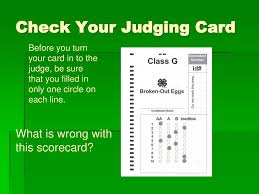
Judging card NM stands out due to its unique set of criteria and rules that are specific to New Mexico. For instance, in agricultural and livestock events, judging cards NM helps ensure that all aspects of the participant’s performance, such as animal condition, handling, and overall presentation, are evaluated accurately.
One key feature of judging cards in NM is the inclusion of localized scoring categories that reflect the cultural and environmental factors in New Mexico. These factors can be crucial in competitions like rodeos, where certain skills and traditions are essential for judging.
The judging card NM system also emphasizes transparency, as the results must be made publicly available after the event. This allows participants and spectators to understand the decision-making process better and reinforces the credibility of the competition.
Judging Card MN – Minnesota’s Approach to Judging
Judging card MN is tailored to meet the specific requirements of events in Minnesota. The state is known for hosting a range of competitions, from ice skating to rodeo, and each event requires a different approach to scoring. The judging card MN typically includes detailed rubrics for each category, such as technique, precision, and artistry, which help judges assign consistent scores.
One notable feature of judging card MN is its focus on fairness. The card includes a section for judges to indicate any potential conflicts of interest, ensuring that all participants are evaluated impartially. This transparency is crucial in events where judges may have personal connections with competitors.
In Minnesota, judging cards are often digital, which speeds up the evaluation process. Digital systems allow for immediate score calculations, helping event organizers avoid delays and ensuring that results are available as soon as possible.
Judging Cards in Missouri – How They Work
Missouri’s approach to judging cards is highly structured and consistent across various competitions. In events like 4-H exhibitions or horse shows, judging cards are used to assess a wide range of factors, such as performance, presentation, and skill. Judges are trained to use judging cards that align with state regulations and ensure fair treatment for all participants.
The judging cards in Missouri are typically filled out on-site and handed directly to event coordinators for immediate processing. This ensures that no time is wasted, and participants are informed of their scores in a timely manner.
Missouri also utilizes judging cards in academic competitions, where criteria such as creativity, logic, and presentation are evaluated. These cards are designed to help judges provide feedback that is both constructive and specific, aiding participants in improving for future events.
Types of Judging Cards: Manual vs. Digital
With the rise of technology, the use of digital judging cards is becoming more common, though manual judging cards are still widely used in certain events. Manual judging cards involve hand-written scores and comments, while digital judging cards allow for real-time score input and automatic calculation.
One significant advantage of digital judging cards is the ability to store and process data more efficiently. They also allow for easy integration with event management software, which can improve the overall flow of a competition. On the other hand, manual judging cards may feel more personal, and many judges still prefer them for events that require in-depth, subjective evaluation.
Both types of judging cards have their merits, but the choice largely depends on the size and scope of the competition. For large events with multiple judges, digital judging cards are usually preferred due to their ability to streamline the process and minimize errors.
Common Problems with Judging Cards and How to Fix Them

While judging cards are essential for fair competition, there are some common problems that judges encounter. One frequent issue is inconsistent scoring. This can be due to differences in judges’ interpretations of the criteria or simple human error. To fix this, it’s important to ensure that all judges are properly trained on how to use judging cards before the competition.
Another problem is failing to fill out the judging card completely, which can lead to confusion and delay in processing results. Judges should always double-check their cards to make sure that all relevant sections are filled out accurately.
Finally, issues with judging cards can arise if they are lost or damaged. Event organizers should provide backup systems, such as digital copies or duplicates of the forms, to ensure that scoring continues uninterrupted.
Judging Cards in Sports – Ensuring Fair Play
In the world of sports, judging cards are vital for ensuring fair play and unbiased decision-making. Whether in gymnastics, diving, or equestrian events, these cards allow judges to evaluate performance based on established criteria, ensuring that no athlete is unfairly favored or penalized. The use of judging cards provides a structured approach to scoring, making it easier for judges to make consistent and objective decisions.
For example, in gymnastics, judging cards help evaluate routines based on difficulty, form, and execution. In diving, judges rate dives on technique, height, and entry. Judging cards ensure that each aspect of the performance is accounted for, leading to a more accurate final score.
Ultimately, judging cards promote fair play by providing a transparent system where athletes and spectators alike can see how scores are derived. This helps build trust in the integrity of the competition.
Judging Card Results: What Happens After Submission?
Once a judging card is submitted, the results go through a thorough process of compilation and analysis. For manual judging cards, event organizers manually tally scores, while digital systems automatically calculate final scores once the data is entered. This ensures that the evaluation process is as efficient and error-free as possible.
In some cases, especially for large events, multiple rounds of review may occur to verify the accuracy of scores. If discrepancies arise, judges may be asked to review their judging cards and provide further clarification.
Frequently Asked Questions about Judging Card
What is a judging card used for?
A judging card is used by judges in various competitions to evaluate participants based on specific criteria. It provides a structured format for judges to score performances, ensuring fairness and transparency throughout the process. Judging cards are commonly used in events like sports, beauty pageants, dance competitions, and academic contests to ensure objective and consistent assessments.
How do I fill out a judging card?
Filling out a judging card involves following a predetermined scoring system or criteria. Judges assess each participant based on these criteria, assigning points or ratings. Ensure that your evaluations are consistent and based on the defined measures. Common mistakes to avoid include overrating or underrating based on personal preferences and not adhering to the given guidelines. It’s also essential to be objective and unbiased while scoring.
What is the difference between manual and digital judging cards?
Manual judging cards are paper-based, where judges write down their scores and comments. Digital judging cards, on the other hand, are electronic and can be filled out on devices like tablets or computers. The digital version allows for quicker data compilation, easier storage, and faster result processing. However, manual cards might be preferred in smaller events or places where digital infrastructure isn’t available.
How do judging card results get processed?
After a judging card is filled out, the scores are usually compiled by event organizers, either manually or through a digital system. Once all judges have submitted their evaluations, the results are tallied, and winners are determined based on the total score. In some cases, the highest and lowest scores may be excluded to ensure fairness.
Conclusion
In conclusion, judging cards are crucial for maintaining fairness, transparency, and accuracy in competitions. They provide a systematic approach to evaluating participants, ensuring that all performances are assessed based on the same criteria. By eliminating bias and offering a structured scoring system, judging cards help preserve the integrity of the event.
Whether manual or digital, these cards offer a reliable means of documenting scores and feedback. The transparency they offer helps prevent disputes and promotes trust among participants, organizers, and audiences. In essence, judging cards are indispensable in ensuring that competitions are conducted fairly and professionally, making them vital for any event that involves subjective evaluation.
